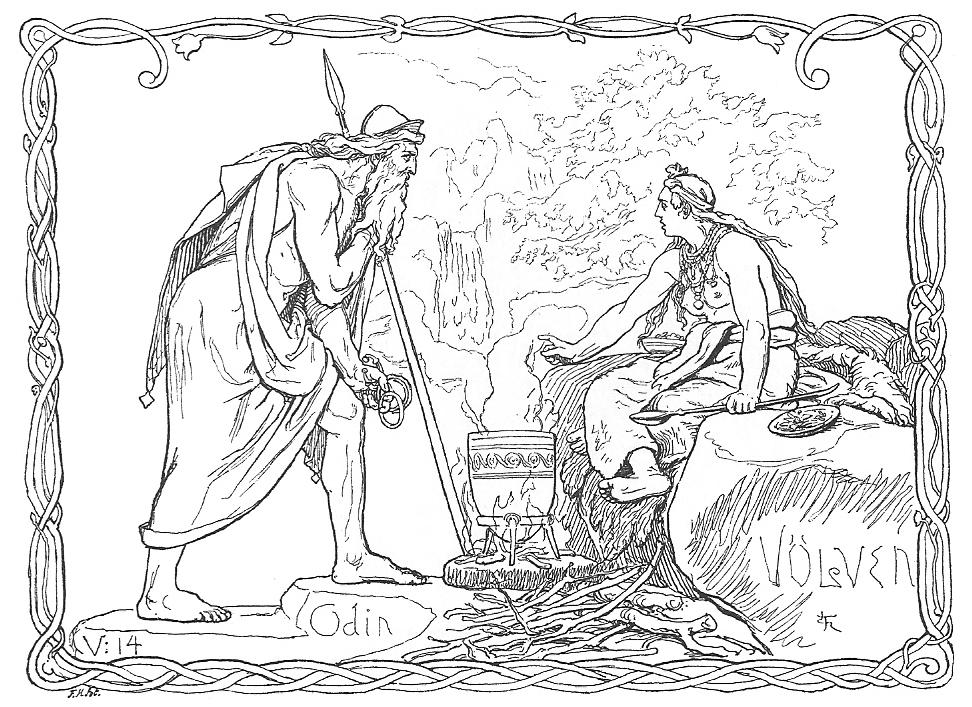In the sagas and historical texts, seiðr was primarily associated with feminine power, as it was believed to involve manipulation of fate, spirits, and emotions—traits that were seen as linked to the feminine and mystical rather than the masculine ideals of strength and combat.
When Odin practiced seiðr, it was considered taboo and shameful for him because it was traditionally associated with women. While the Poetic Edda doesn’t directly say Odin “lost his manhood,” it does reflect the tension around his practice of seiðr. In Völuspá, Odin speaks of his sacrifices for knowledge, including his hanging on Yggdrasil (stanza 22), but the shame of practicing seiðr is more explicitly referenced in Lokasenna, where Loki mocks Odin for engaging in practices that were seen as unmanly, such as taking on the female role of the seeress. This taunting reinforces the cultural perception of seiðr as diminishing masculinity.
When Odin practiced seiðr, it was considered taboo and shameful for him because it was traditionally associated with women. While the Poetic Edda doesn’t directly say Odin “lost his manhood,” it does reflect the tension around his practice of seiðr. In Völuspá, Odin speaks of his sacrifices for knowledge, including his hanging on Yggdrasil (stanza 22), but the shame of practicing seiðr is more explicitly referenced in Lokasenna, where Loki mocks Odin for engaging in practices that were seen as unmanly, such as taking on the female role of the seeress. This taunting reinforces the cultural perception of seiðr as diminishing masculinity.
In the sagas and historical texts, seiðr was primarily associated with feminine power, as it was believed to involve manipulation of fate, spirits, and emotions—traits that were seen as linked to the feminine and mystical rather than the masculine ideals of strength and combat.
When Odin practiced seiðr, it was considered taboo and shameful for him because it was traditionally associated with women. While the Poetic Edda doesn’t directly say Odin “lost his manhood,” it does reflect the tension around his practice of seiðr. In Völuspá, Odin speaks of his sacrifices for knowledge, including his hanging on Yggdrasil (stanza 22), but the shame of practicing seiðr is more explicitly referenced in Lokasenna, where Loki mocks Odin for engaging in practices that were seen as unmanly, such as taking on the female role of the seeress. This taunting reinforces the cultural perception of seiðr as diminishing masculinity.






